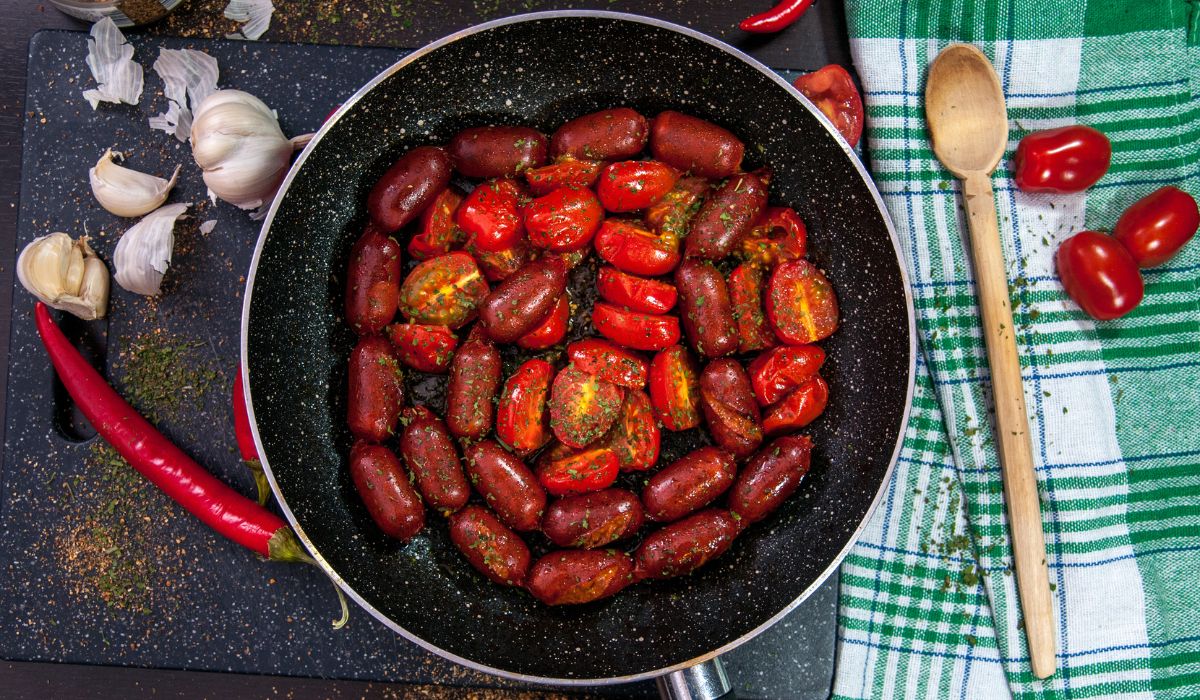
Chili peppers are one of the oldest food plants in the world - we’ve been eating them for 8,000 years or so, so they’re pretty darn close to being something you really could have eaten in the Paleolithic. Even better, unlike fruit, chili peppers haven’t been bred for more and more sugar over the years, so they’re totally low-carb and keto-friendly.
If you’re already a chili pepper aficionado, you probably know that capsaicin is the compound responsible for giving chili peppers their eye-watering heat. But capsaicin doesn’t just taste good; it also has some pretty nice health benefits. From weight loss to heart health to gastrointestinal pain, here's a look at the evidence in favor of getting your spice on.
1. Dietary capsaicin talks to your fat cells...and you’ll like what it says.
Your fat cells don’t just sit there storing energy. They’re actually really chatty: as this study explains, fat cells “communicate with essentially every organ system in the body” via protein signals. Those signals regulate things like how big your fat cells get, how hungry you feel, and how many new fat cells you make.
Enter capsaicin. This paper explains how capsaicin affects fat cell signaling, via the capsaicin receptor (transient receptor potential vanilloid subtype 1, or TRPV1). Basically when capsaicin shows up to the party, it activates TRPV1 channels. TRPV1 activation promotes lipolysis (the breakdown of fat cells) and helps prevent fat gain. The study linked above concluded that “dietary capsaicin may represent a promising lifestyle intervention in populations that are at high risk for obesity” because of its effects on fat cell signaling.
Other research has found that TRPV1 channel activation can stimulate the transformation of white fat into brown fat, aka “fat-burning fat” (learn more about brown/beige fat here). Because brown fat burns a lot more calories than white fat, transforming white fat into brown fat is a nifty metabolic trick for weight loss - the only problem is that it’s very hard to do in adults. The best-known way to get more brown fat is via cold exposure, but the magic of cold exposure is the way it activates transient receptor potential channels - like, say, TRPV1.
In other words, capsaicin has similar effects to cold exposure, no freezing showers or ice baths required. Or, as the study put it, “Capsaicin and its analog capsinoids, representative agonists of TRPV1, mimic the effects of cold to decrease body fatness through the activation and recruitment of BAT” (BAT = Brown Adipose Tissue = brown fat).
2. Capsaicin-rich foods keep your gut happy
Spicy foods are infamous for causing indigestion, especially heartburn, but actually regularly eating spicy foods may help to reduce oversensitivity in the digestive tract and ease GI symptoms. Basically, in the same way that eating hot peppers can make your mouth a bit numb, capsaicin can also make other parts of the digestive system a bit numb, so that you don’t feel cramps or gas as strongly. This has also been shown in patients with Irritable Bowel Syndrome (IBS).
Capsaicin is also good for your gut bacteria. This study goes into all the effects of dietary capsaicin on the gut biome in excruciating detail, but here’s the short version
- Dietary capsaicin increased the ratio of firmicutes (one group of bacteria) to bacteroidetes (another group) and also increased the number of faecalibacteria - these are all changes that seem to be associated with lower weight.
- Dietary capsaicin changed the gut bacteria in ways that made them produce more satiety hormones and less ghrelin (a hormone that makes you feel hungry).
If that’s not enough for you, capsaicin also helps to strengthen the protective lining of the gastrointestinal tract and protect against ulcers and other kinds of gut injuries. In fact, capsaicin can even protect against alcohol-induced damage to the gut.
3. Capsaicin is powerfully anti-inflammatory
In a world full of pro-inflammatory stress, air pollution, and junk food, anything anti-inflammatory is a pretty good addition to your diet. Chili peppers rich in capsaicin are standout anti-inflammatory foods: for example, one study showed that capsaicin lowers C-reactive protein (a marker of overall inflammation)
To take another example, this study (admittedly, in mice and with supplements) found that when capsaicin altered gut bacteria, it changed them in a way that protected subjects against metabolic endotoxemia. Metabolic endotoxemia is what happens when things that ought to stay inside your gut cross through the gut barrier and get out into your bloodstream. It’s really bad news and you can read more about it here, but the short version is that it causes the kind of low-grade inflammation that contributes to obesity. By preventing metabolic endotoxemia, capsaicin helps prevent chronic inflammation - and you get healthy gut bugs as a side bonus.
4. Capsaicin-rich peppers are good for your heart.
Remember TRPV1, the capsaicin receptor? Well, activating the TRPV1 receptor helps protect cardiovascular organs, including the heart, from oxidative damage. This study explains the evidence for dietary capsaicin as a heart-protective choice. For example, TRPV1 helps keep the lining of blood vessels healthy (which reduces the risk of high blood pressure). TRPV1 also activates another receptor, LXRα, that protects against plaque formation in the arteries.
There’s also research on capsaicin and cholesterol - before reading that, if you’re at all confused about dietary cholesterol vs. blood cholesterol, or the Paleo take on cholesterol in general, try here or here!. Even the most recent US Dietary Guidelines took out the cholesterol limit because “available evidence shows no appreciable relationship between consumption of dietary cholesterol and serum cholesterol,” so don’t take anything below as a referendum on steak or butter.

With that said:
Some research also shows that capsaicin-rich foods may help improve blood lipids (cholesterol and triglycerides). For example, here, people with low HDL (“good”) cholesterol got either capsaicin or placebo. The capsaicin group wound up with higher HDL cholesterol and lower triglycerides, indicating that they’d reduced their risk of heart disease. This study found similar benefits in women with gestational diabetes.
Another study found that capsaicin helped protect LDL cholesterol and blood lipids from oxidation. As the study explains, oxidation is a key step in actually forming arterial plaque (atherosclerosis) and the connection between “blood cholesterol” and “heart problems.” The researchers gave 27 people either chili peppers or no chili peppers for 4 weeks: by the end, people in the chili pepper group had a much lower rate of lipid oxidation, suggesting that their cardiovascular systems were in better shape.
Notably, this group stressed the combined effects of all the good stuff in the chili peppers (e.g., vitamin C, other antioxidants) - real food winning out over supplements once again!
5. Capsaicin reduces appetite and slightly increases energy expenditure
On top of the more indirect effects on fat cells, capsaicin also has direct effects on appetite and metabolism that make capsaicin-rich foods useful for weight loss. There’s a lot of woo-woo nonsense about “metabolic boosting” so just to be clear: chili peppers aren’t the magical crash diet food that will give you perfect abs in 3 weeks. They’re a decent addition that add some fringe benefits to an overall healthy diet - that’s all, but that’s not nothing.
A systematic review of human studies found that dietary capsaicin increased the number of calories that people burned, reduced belly fat, and reduced appetite. Another review turned up similar findings: “daily consumption of capsaicinoids may contribute to weight management through reductions in energy intake...there may be potential for capsaicinoids to be used as long-term, natural weight-loss aids.”
The effects on appetite and fullness might be thanks to the effects of capsaicin on the GI tract, or maybe just because hot peppers are pretty hard to stuff yourself with.
The increase in energy expenditure isn’t much to write home about - roughly 50 calories a day - but it’s something, and combined with the appetite reduction, it’s definitely helpful. Just to throw out another idea, this study combined chilis and medium-chain triglycerides for an extra weight-loss boost.
Spicy Foods: They’re Good for You!
There’s a reason why humans have been eating chili peppers for thousands of years - admittedly, it’s partly because they’re delicious, but also because they do us a lot of good. From heart health to gut protection, you can get a lot more out of chili peppers than just a great flavor!
Ready to get started? Check out some mouthwatering spicy recipes below:





Leave a Reply